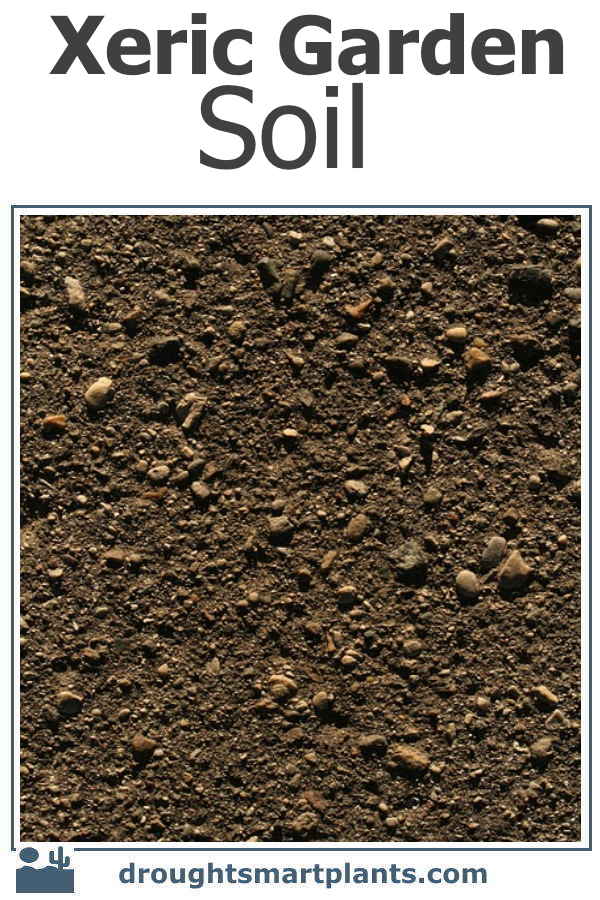Sandy Soil, Clay, Loam or Gravel
Luckily, many xeric plants require good drainage, meaning a sandy or gravely soil.
They have evolved over eons to not only survive in these lean, nutrient poor soils with rapid drainage, they absolutely require them.

Luckily, you can grow an incredible number of great plants in well drained conditions; like the ones in my 10 Best Xeric Plants list. Many other xeric plants, shrubs and groundcovers thrive in this type of soil
What is your xeric garden soil? Do you know?
The ideal xeric garden soil is sandy and well drained, with the addition of copious amounts of organic matter; but not to worry if you live in an area of acid clay based soil – all is not lost; simply grow native plants from your area, or start adding compost and other organic matter to it.
The beauty of compost is that over time it makes all soils more neutral, enabling you to choose from a much wider selection of plants.
After testing your soil, add dolomite lime or wood ashes to ‘sweeten’ your soil, or peat moss or pine needle mulch to acidify it. In general, most soil will benefit from being more alkaline than acidic.
Plants with succulent foliage such as Sedum and Sempervivum will rot if you attempt to grow them in poorly draining and heavy clay soils. They are quite happy growing in the crevices of rock walls built around a raised bed.
Other plants with drought smart strategies such as thyme have net-like roots which need oxygen around them, and still others have fleshy roots or tubers for water storage. All are susceptible to an over abundance of moisture that’s allowed to pool around their feet – er, roots, so please add more drainage in the form of large sand or small gravel.
Historically, to grow a garden meant to plunk in whatever plant took your fancy, and then bring on the water. Scarcity? What’s that? It rarely occurred to any of us to plan ahead for a lack of the precious stuff.
Now, we think of all kinds of innovative ways to capture water and use it wisely in our xeric gardens.
Xeriscape design, or planning our gardens with drought loving plants, involves a lot more decision making than other types of gardens. The planning process starts with determining ahead of time how much water we can afford to waste on anything that’s not a food crop.
There are many ornamental plants that require very little water once established, so those are the ones to choose from.
It’s become almost second nature to plant in zones, with those plants needing more care, better soil and more water close to the dwelling, and gradually diminishing in maintenance the further away you get.
This works for xeric garden soil too, as the most attention to soil amendment is paid to closer areas, and less needy plants are placed further away in areas that get less attention.
Here are a few ways to improve your Xeric Garden Soil:
Tip – or what not to do:
Don’t simply dig a hole in your clay soil, fill it with compost and expect that to work – all you will accomplish is a bog garden if there’s no drainage. Of course, if a bog garden was what you were after…
- If all you have is clay, build raised beds out of imported sandy or gravely soil, amended with compost, well rotted manure or leaf mold, made from fall leaves.
- All soils – clay, sand, and loam alike – will benefit from the addition of compost and mulching. Get in the habit of keeping your xeric garden soils covered to protect them from wind and rain erosion.
- Avoid walking on garden beds, especially if wet. Make a pathway to keep all foot traffic off the soil.
- Grow groundcovers anywhere that’s not mulched to shade the soil and retain moisture for trees and shrubs.
Taking good care of the soil you already have is crucial for a sustainable garden, and especially a xeric one.
Using these ideas and tips to improve your soil to its full potential will ensure that you have a beautiful, productive and healthy garden for many seasons to come.

